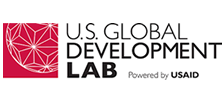Spotlight: The University of Washington Center for Conservation Biology is using DNA technology and sniffer dogs to protect pangolins
28 August 2017
Welcome to an installment of our Spotlight series, each highlighting one of our 16 Prize Winners working to combat wildlife crime around the globe. Find out about all our Winners here, and check back in on Mondays for a new Spotlight post.
Pangolins are some of the most bizarre-looking and heavily poached mammals in the world. Trafficked for their meat and scales, all eight species of pangolin across Africa and Asia are currently threatened with extinction. “Over a million have been poached in the last decade,” says Sam Wasser, director of the Center for Conservation Biology at the University of Washington.
Wildlife Crime Tech Challenge Grand Prize Winner the University of Washington is working to change that. “We are developing genetic techniques to pinpoint the origin of large pangolin seizures to find out exactly where they were poached,” explains Wasser. Developing very accurate DNA markers similar to what the FBI uses to identify a criminal at a crime scene allows the University of Washington team, led by Wasser and graduate student Hyeon Jeong Kim, to distinguish pangolin species and populations. Based on these markers, Kim and Wasser are creating a global pangolin genetic reference map, constructed using geo-referenced tissue samples from museums and wild dung samples located by their detection dogs. This genetic reference map will help authorities identify the origin of large pangolin seizures and focus on at-risk pangolin populations and areas. Interestingly, the canines working with Kim and Wasser are rescued from shelters and love putting their noses to work for wildlife protection! Recently in Nepal to locate pangolin dung samples, Kim and detection dogs Skye and Athena and their handlers, Jennifer Hartman and Suzie Marlow, walked about 10 kilometers per day at high elevations. “We ran into many challenges, but Skye and Athena were cheerful and essential to finding the samples,” says Kim.
It is a technique that the University of Washington team has used before. For more than fifteen years, they have been working on a similar approach to track large seizures of African ivory and successfully pinpointed two main countries where almost 100 percent of the ivory had been poached-a huge boon to law enforcement efforts. Wasser’s DNA analysis helped determine that massive transnational organized crime plays an important role in ivory poaching, and his team’s work helps law enforcement prosecute criminals. Now, following the successful application of the technique to ivory, they are working to help uncover and stop syndicated criminals who are targeting pangolins. “Virtually all of the methodology to make this work, and the connections with countries and law enforcement, we have it in place,” notes Wasser.
Find out about the Challenge’s talented Prize Winners and their game-changing innovations to fight wildlife crime here. All of our Prize Winners, including the University of Washington, are looking for partners, organizations, individuals, and funding agencies that can help them scale their solutions. If you would like more information, get in touch at info@wildlifecrimetech.org.




